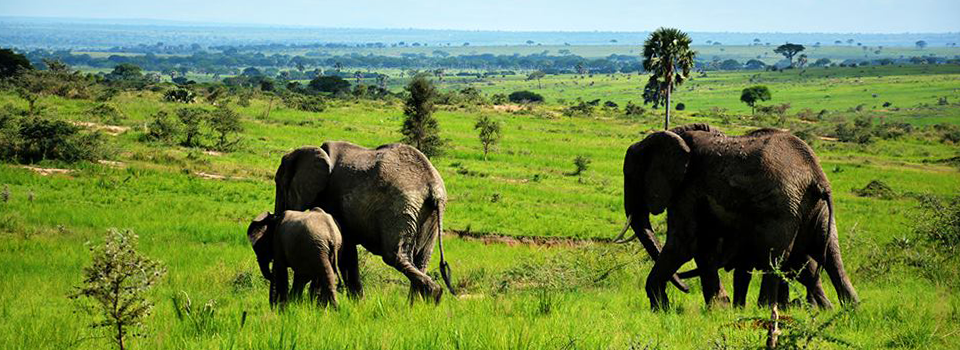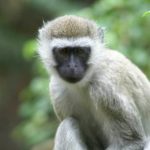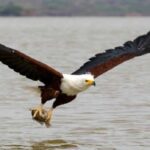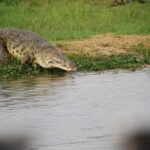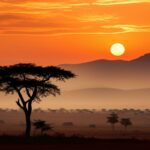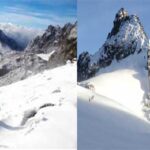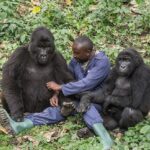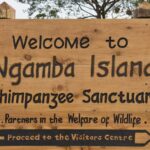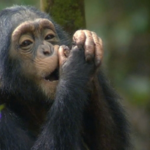Uganda, the Pearl of Africa, is one of the most sought-after adventure destinations in the continent. Most visitors come for the riveting gorilla trek safaris, others come for the exquisite photography opportunities and some others just really want to enjoy a whole new world in this jungle of a paradise. But when it comes to planning the trip, most people find themselves puzzled as to WHEN they should go. Depending on what you wish to achieve on your trip – whether it’s to watch migratory birds, take thousands of stunning photos, see large mammals or visit endangered mountain gorillas, this guide will give you a peek at Uganda’s month-by-month milestones.
Things you need to understand:
- ✓ Uganda sits on the equatorial line. This means weather in the country is fairly consistent with very little temperature fluctuation all year-round.
FUN FACT: There is an amazing place in Uganda where you can stand on the invisible equator line as well as set foot on both hemispheres of the world at the same time. The place is called “Uganda Equator” and it can be found in Kayabwe, Mpigi District, about 72 kilometers from Kampala City.
- ✓ Since much of Uganda is settled in a plateau, the country’s climate has been mitigated by its altitude, giving it a pleasantly warm condition throughout the year.
- ✓ Southern Uganda has 2 dry seasons and 2 wet seasons. June to August is the driest season with little to no rainfall while December to February is the second dry season, with minimal rainfall, more sunshine and warmer daytime temperature. March to May is the wettest season with daily rainfall and September to November is the second wet season, in which light to heavy rainfall is often experienced.
- ✓ Northern Uganda has one continuous wet and dry seasons which are from March to November and December to February respectively.
- ✓ Southern Uganda covers most of the star attractions of the country including Bwindi Impenetrable Forest, Queen Elizabeth National Park and Kibale Forest National Park.
- ✓ Northern Uganda includes Murchison Falls National Park, Kidepo Valley and Pian Ube Wildlife Reserve.
- ✓ Rainforests, by default, are very hot and wet and therefore it is impossible to be able to completely avoid any rainfall.
What to expect each month
Here is Uganda at a glance:
Classified as part of the short dry reason, January remains to be one of the best times to visit Uganda. Although slight rainfall can be expected anytime during the month, temperatures remain consistently good all throughout and game activities are unlikely to be affected.
Wildlife spotting and gorilla trekking are particularly fantastic during this time. With less vegetation to interfere game viewing and many animals congregating around waterholes, it’ll be easier to spot wildlife. Trekking in Bwindi Impenetrable Forest can also be comfortable due to its cooler temperature as well as chimpanzee trekking in Kibale Forest National Park. For twitchers, January is an excellent time to spot a wide range of migratory birds.
January is considered a peak season but even so, camps and parks become quieter during this month – probably because the holidays are over.
| Average temperature 18 to 28°C/64 to 82°F |
| Average amount of precipitation 46mm |
Recommended tours:
5 Days Standard Gorilla Exposure
9 Days Special Primate Tour Chimps, Wildlife and Gorilla Tour
5 Days Sample Cultural Safari with a Chimpanzee Trekking Experience
Although February is still a dry season, a significant drop in the number of visitors is already usually seen. Hence, prices in camps and activities may shift accordingly. Like January, February is a superb time to see migratory birds, go gorilla trekking and spot a variety of wildlife. Vegetation during this month becomes more sparse and so, with an unobstructed view, you can easily spot more and more animals around remaining water resources.
The whole country enjoys a dry, hot weather with clear skies in the afternoon and minimal chances of rain. Now is the perfect time to visit Kibale Forest National Park, a park that boasts of 13 primate species including golden monkeys and chimps, as trails are dry and chimpanzees during this month are a lot easier to track.
| Average temperature 18 to 28°C/64 to 82°F |
| Average amount of precipitation 61mm |
Recommended tours:
5 Days Special Murchison Falls National Park
As the wettest season commences, it is wise to just expect bumpier journeys and heavy rainfall. However, this doesn’t mean Uganda is entirely off-limits to visitors. With vegetations becoming lush and green, March is the perfect time to see a partly dense and partly sparse landscape (or just the right balance of both). Opportunities for wildlife sightings can still be good and what makes it even better is that prices drop significantly during this season.
You can go gorilla trekking for a cheaper price and since food for gorillas are ample at the lower slopes of the mountain, you don’t have to worry so much about trekking through tough and wet terrain because you might just be able to encounter gorillas on the beginning of your trail.
Uganda has always been known to be a birder’s paradise due to its remarkable avian diversity. Aside from its 400 resident bird species, many other impressive migratory birds come to dwell in the country. These migratory birds start to depart in April and so March is the perfect time to see them before they go.
| Average temperature 18 to 27°C/64 to 81°F |
| Average amount of precipitation 130mm |
Recommended tours:
April and May are the wettest months in Uganda. It is usually not considered the best time to travel but if rainfall do not really concern you that much, your visit to Uganda could be exquisite. Parks are lush and verdant, many animals give birth to their young and a few new migratory birds arrive making Uganda a sensational backdrop for photography.
You have to note that wildlife sighting can be difficult, some lodges close down and some roads and trails may become impassable during this month. However, you can take advantage of overwhelmingly lower prices and gorilla permit rates during these months. It is also best to visit Murchison Falls to witness the mighty Nile river.
| Average temperature 17 to 25°C/62 to 77°F |
| Average amount of precipitation 147mm |
Recommended tours:
As the dry season starts again, June is the perfect time to combine wildlife safaris and scenic photography. Landscapes are still quite lush and rain may still come and go but overall, weather is pleasant and game viewing is excellent.
Since this is the beginning of peak season and most countries also have their summer vacations, expect prices to spike up and availability to fill up fast. So if you’re planning to visit around this month, book your tour, especially itineraries with gorilla trekking, in advance. The beauty of Uganda is, unlike other popular safari destinations, even though it’s peak season, the parks don’t feel overcrowded at all and you can still enjoy that intimate wildlife experience.
| Average temperature 17 to 25°C/62 to 77°F |
| Average amount of precipitation 74mm |
Recommended tours:
5 Days Special Queen Elizabeth National Park
15 Days Classic Uganda Wildlife Tour With Primates
5 Days Standard Gorilla Exposure
June to August (and sometimes early September) is considered the driest months and therefore the best months to travel to Uganda. It features sparse vegetation with plenty of wildlife gathered around watering holes, warm but comfortable temperatures, clear skies in the afternoon, cooler temperatures at night, all-accessible activities and excellent primate trails.
This is a fantastic time for gorilla trekking, chimpanzee trekking, game viewing, boat cruises and white water rafting! Although prices are also at its peak, the adventure and scenery that await you make it absolutely worth it!
| Average temperature 16 to 25°C/61 to 77°F |
| Average amount of precipitation 86mm |
Recommended tours:
7 Days Wildlife and Gorilla Viewing Experience
15 Days Classic Uganda Wildlife Tour With Primates
5 Days Sample Cultural Safari with a Chimpanzee Trekking Experience
As always, Uganda’s temperature remain stable despite the rain and wildlife experiences will always be available. As September marks the end of the dry season, expect the landscape to not be so verdant yet so wildlife viewing can still be splendid. Just be prepared for a wet journey whether you’re out to view some wildlife or you’re trekking amongst the jungles to visit the gorillas.
All parks except Kibale Forest National Park can be in good conditions during this time. So if your goal is to visit the chimpanzees, this might not be the optimum time for you.
| Average temperature 17 to 27°C/62 to 81°F |
| Average amount of precipitation 91mm |
Recommended tours:
5 Days Special Kidepo Valley National Park
Like September, there are still plenty of opportunities to observe wildlife during this month as vegetation remains low and animals continue to seek out waterholes. It is usually the month where prices start to take a plunge and weather becomes unpredictable. If you’re going on a game drive, watch out for some tree-climbing lions as they can often be seen hiding out during rain showers. If you’re up for a challenge on a tougher trek, know that many mountain gorillas take shelter under huge tree leaves during rainfall.
Murchison Falls is also splendid all year-round with steady conditions, a continuously powerful river that surges gracefully in a gorge and a consistently impressive scenery that’s just entirely stunning in every way.
| Average temperature 17 to 27°C/62 to 81°F |
| Average amount of precipitation 97mm |
Recommended tours:
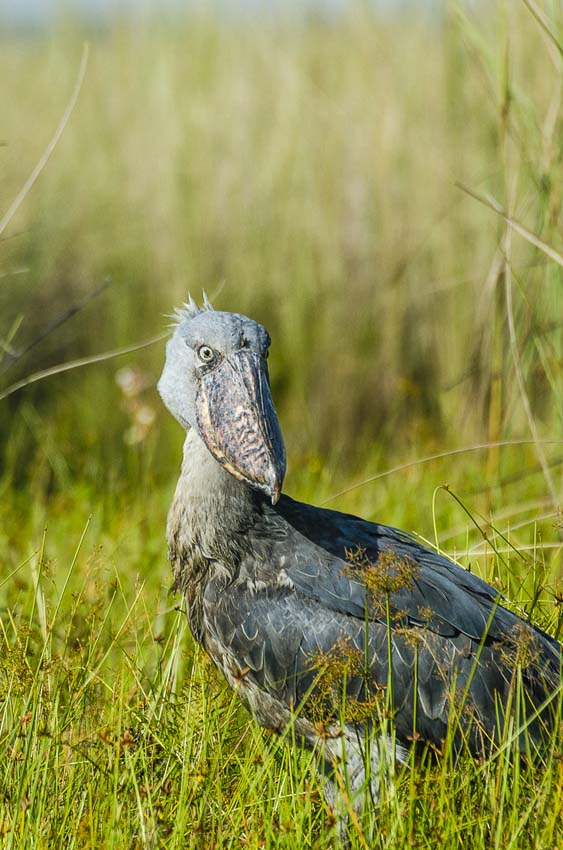
When it comes to wildlife viewing, November may not be an ideal time to visit. But because of its green landscape, it creates a breathtaking scenery. Gorilla permits are also priced very low at this time, however, a visit to Bwindi Impenetrable Forest National Park is certainly not advisable.
November is especially excellent for bird watchers as this is the start of the best birding season. Migratory birds begin to arrive and the lush landscapes provide an Eden-like panorama.
| Average temperature 17 to 27°C/62 to 81°F |
| Average amount of precipitation 122mm |
Recommended tours:
The short rains usually cease by December. Not only are landscapes highly photogenic and parks are all accessible, jungle trails also start to dry up and wildlife viewing become much more desirable. Since it’s holiday season, expect a surge of other visitors – locals and foreigners alike.
While December is an excellent time to visit almost all parks in the country, it is not the best time to go to Queen Elizabeth National Park. The park may be accessible during this time but wildlife sighting opportunities are certainly not at its prime. It is best to explore Queen Elizabeth National Park during the driest season (June to August) and also between January and February.
| Average temperature 17 to 27°C/62 to 81°F |
| Average amount of precipitation 99mm |
Recommended tours:
5 Days Special Murchison Falls National Park
5 Days Chimpanzee Trekking and Habituation Experience
5 Days Sample Cultural Safari with a Chimpanzee Trekking Experience
Wrap-up
Thanks to Uganda’s equatorial climate as well as Lake Victoria’s unique weather patterns, the country is a year-round destination. What will ultimately help you decide on when to go is what you want to see, where you want to go, how adventurous you can be and how much you’re willing to shell out for such unforgettable bucket list experience. Just remember: if you plan to go around the dry seasons, always make sure to book early. And, regardless of the season, make sure to bring rain protective gear and a good pair of shoes and always be ready to have your breath taken away because – and this is not an overstatement – a lot of visitors say they left their hearts in Uganda.

